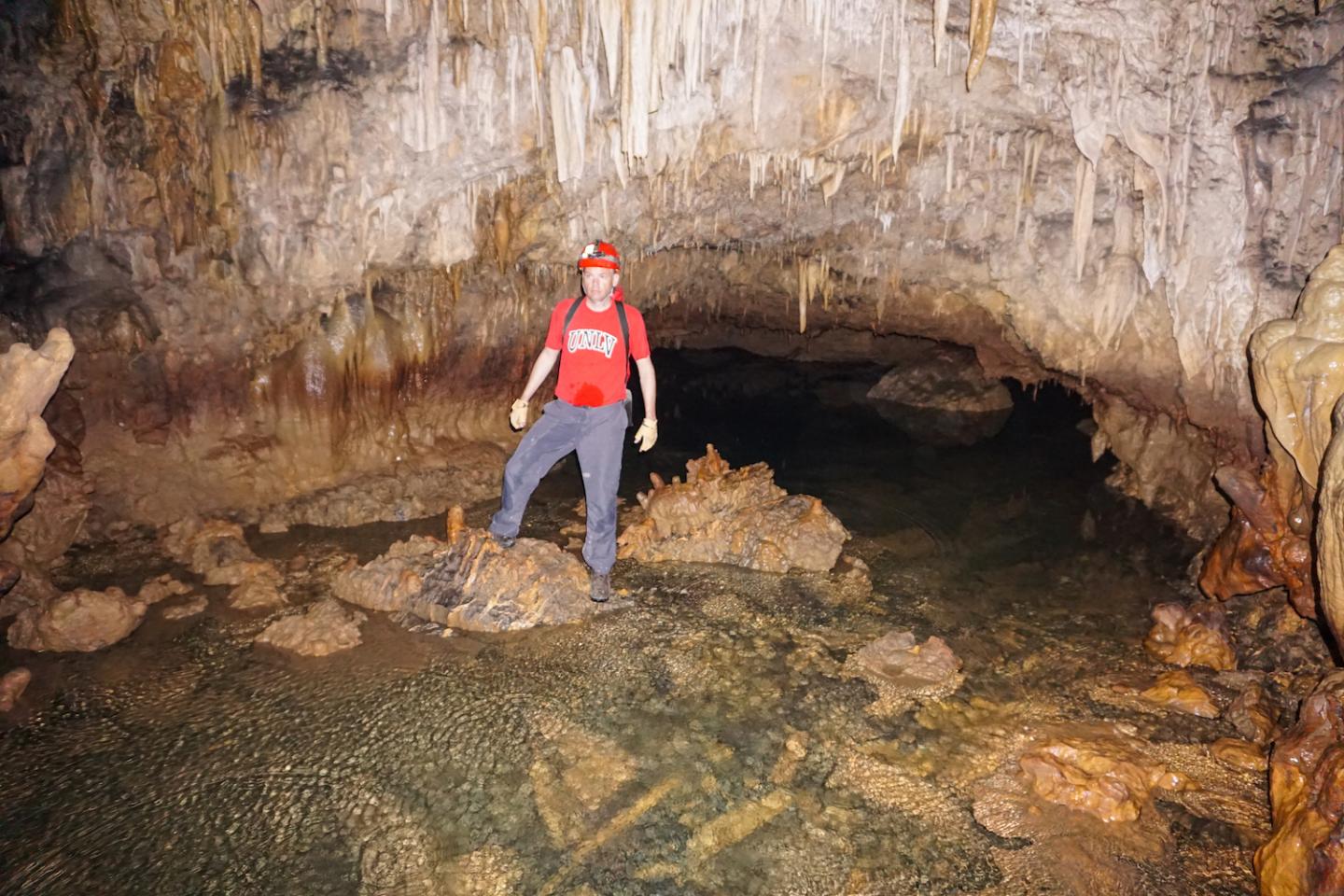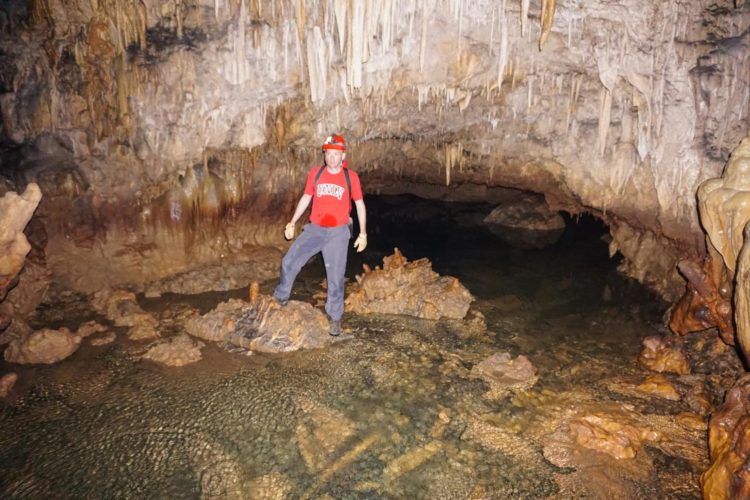New UNLV research provides context for climate history of Guatemalan rainforests

Credit: Amos Winter, Indiana State University
Tourists today spend thousands of dollars to explore and enjoy the lush and thriving rainforests of Guatemala.
It’s hard to believe the landscape ever looked any different. But according to new research by UNLV climate scientists, the locations where those jungles exist today likely looked very different less than 9,000 years ago – a blink of an eye by geologic standards.
“We often think of ecosystems as being unchangeable — that a tropical rainforest is there, and has always been there,” said Matthew Lachniet, professor and chair of the geoscience department at UNLV. “But that’s not true. Any ecosystem responds to climate changes.”
In a study published today in the journal Nature Communications, Lachniet and colleagues at Indiana State University, the University of Venice, and other institutions examined the rainfall history of Central America over the last 11,000 years. The results provide context for the development of tropical rainforest ecosystems in the region, and long-sought answers to what has been controlling rainfall in Central America for several millennia.
“Our results suggest that the rainforest as we know it today must have responded to those climate changes, and must be less than 9,000 years old in terms of its functioning and its structure, because the region was too dry before then to sustain it,” Lachniet said.
Stalagmite specimens gathered from a tourist cave in Cobán, Guatemala, provided this insight and other historical data about the climate history of the region.
Researchers found:
- Solar radiation, or insolation, is widely known to control rainfall amounts in the tropics. Guatemalan cave records, however, tell a different story for the Central American region of the tropics.
- In Central America, rainfall was weak 11,000 years ago, strengthened to modern levels at 9,000 years ago, and showed only a very weak decrease to today, unlike the history of insolation.
- When ice sheets from the last Ice Age melted mostly away — about 9,000 to 7,000 years ago — temperature rose and Central American rainfall responded in turn.
- The Central America rainfall record has the same time evolution as ocean and land temperatures over the last 11,000 years; therefore, ocean surface temperatures were more important than the sun’s rays in driving rainfall in the region.
“We found that as the oceans warm up, rainfall increases over Central America,” Lachniet said.
The team also found that the rainfall variations over the last 3,000 years, during which time the famed Maya civilization reached its maximum urban development and subsequent collapse, were relatively small compared to the total range of rainfall variation captured by the cave deposits.
Lachniet and collaborators spent several days completing field work underground in Rey Marcos Cave, Guatemala for this research, which is a subterranean wonder of stalactites, stalagmites, and a disappearing river.
According to Lachniet, the next phase of the team’s research in the region will continue to examine the impacts of climate on the Maya civilization throughout its history. In previous research, Lachniet and an international team of researchers used stalagmite specimens to link the rise and fall of ancient Mesoamerican civilizations to changing rainfall.
###
Publication Details
“Initiation of a stable convective hydroclimatic regime in Central America at ~9000 years BP” appeared in the Feb. 5 issue of Nature Communications.
Media Contact
Natalie Bruzda
[email protected]
702-895-5132
Original Source
https:/
Related Journal Article
http://dx.





